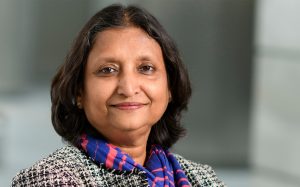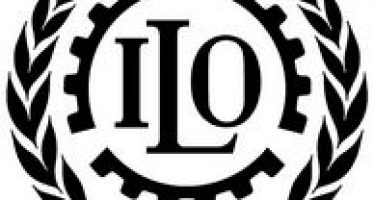World Bank on Sustainable Recovery: The Need for Long-Term Financing

By Anshula Kant Managing Director and Chief Financial Officer, World Bank Group
The COVID-19 pandemic is affecting every country’s health system and economy to a degree not seen for a century or more. In developing countries, mounting an adequate response to address these simultaneous shocks has created fiscal challenges, especially for those that were already experiencing high levels of debt and that are unable to access funding on reasonable terms from international capital markets.
To obtain the financing they need to shore up their health systems, boost incomes, support businesses, and improve nutrition for poor and vulnerable households, developing countries have turned to the World Bank Group and other multilateral development banks. As in past crises, institutions like ours have responded promptly by substantially scaling up financial and technical support to help countries get back on their development path.
At the World Bank Group, over 15 months, through June 2021, we are making available up to $160 billion in financing to client countries. These resources are ensuring significant net positive flows to the world’s poorest countries; they are supporting governments’ policies and actions to address the health crisis, respond to the needs of households and firms, and build the foundations of a green, resilient, and sustainable recovery. Our financing is coupled with technical support, based on the best available analysis and drawing on international experience, lessons from evaluation, and cooperation with partner institutions.
The World Bank is financing its portion of the Bank Group’s scaled-up response by turning to international capital markets, raising low-cost, long-term funds that can be channeled to client countries. The World Bank offers investors safe-haven, liquid assets, with its triple-A credit ratings supported by strong balance sheets and shareholder support. In fiscal year 2020 (July 2019–June 2020), the World Bank issued a record $75 billion equivalent to support sustainable development projects and programs, a 40% increase over the previous year. In the spring and summer of 2020, as the World Bank accessed the markets, it also raised awareness for projects and programs that help countries address the health, social, and economic impacts of COVID-19.
With interest rates at historic lows—especially at the shorter-end of the maturity spectrum, where investors find themselves considering investments offered at negative yields in some markets—investors are seeking out longer-dated investments. This demand presents institutions like ours with new opportunities to tap long-term global savings to fund sustainable development. For example, the World Bank’s 10-year bond issue in February 2021 raised US $3.5 billion from over 115 investors with a coupon of 1.250% p.a. Similarly, in January 2021, the World Bank issued its largest bond at the long end of the maturity spectrum—a Euro 2 billion, 40-year sustainable development bond with a coupon of 0.200% p.a., which received over 110 orders totaling more than Euro 3.6 billion.
The World Bank’s financing to help countries respond to COVID is also supporting major trends in global investing. The recent bonds attracted substantial interest from pension funds, insurance companies, and asset management firms, many of which are new to the institution’s funding program and have helped diversify its investor base. All World Bank bonds are sustainable development bonds: as such, they provide an additional benefit to investors who seek to align assets with best practices on environmental, social, and governance (ESG) standards.
Investors are also looking for floating rate products that offer an alternative to LIBOR. The World Bank is responding to this demand while supporting initiatives that establish robust alternatives to LIBOR, as illustrated by the first SOFR-linked benchmark in its peer group in 2018. Subsequent issuances added liquidity to the market and extended the yield curve up to 10 years with the recent SOFR benchmark transaction.
For client countries, more efficient and transparent debt management is one way that the pandemic crisis can help reduce debt vulnerabilities and rebuild their economies in a more resilient and sustainable way. The World Bank tailors its product offerings to meet their demand for variable or fixed-rate funding over a wide range of maturities. While some countries prefer variable rates within their debt management framework, others choose to fix the interest rates to achieve more predictable cash flows and benefit from low interest rates.
The COVID-19 crisis response offers many opportunities to rebuild stronger, greener, and more equitable institutions and development programs. The World Bank is committed to working with member countries to achieve these goals. Meeting ambitious investment objectives will require countries to mobilize significant resources, including development financing, private sector funding, and domestic resources. The pressure that the COVID-19 response has put on government balance sheets makes this even more urgent. But the pandemic has also created an opportunity for developing countries to optimize financing by securing the low rates and long-term financing that will be key to a lasting recovery, greater resilience, and progress on sustainability.
By participating in the World Bank’s funding, private investors are playing a critical role in reigniting economic growth. The response to the pandemic gives them an opportunity to step up a positive economic and social impact in the developing world—ultimately helping pave the way for a green, resilient, and sustainable future.
You may have an interest in also reading…
Sustainable Investment in the Dominican Republic: Driving Economic Development in the Caribbean
The Dominican Republic has emerged as a regional leader in attracting foreign direct investment (FDI) within Central America and the
Europe’s Original Sin and the Dangers of Doing Good
Carlos Rangel, the Venezuelan diplomat and essayist, once pointedly remarked that western nations often send their failed politicians – the
Rethinking Economic Growth in Arab Societies
After decades of skewed development policies, social injustice, and poorly managed economic liberalization, Arab countries must rethink their growth strategies,



















































































